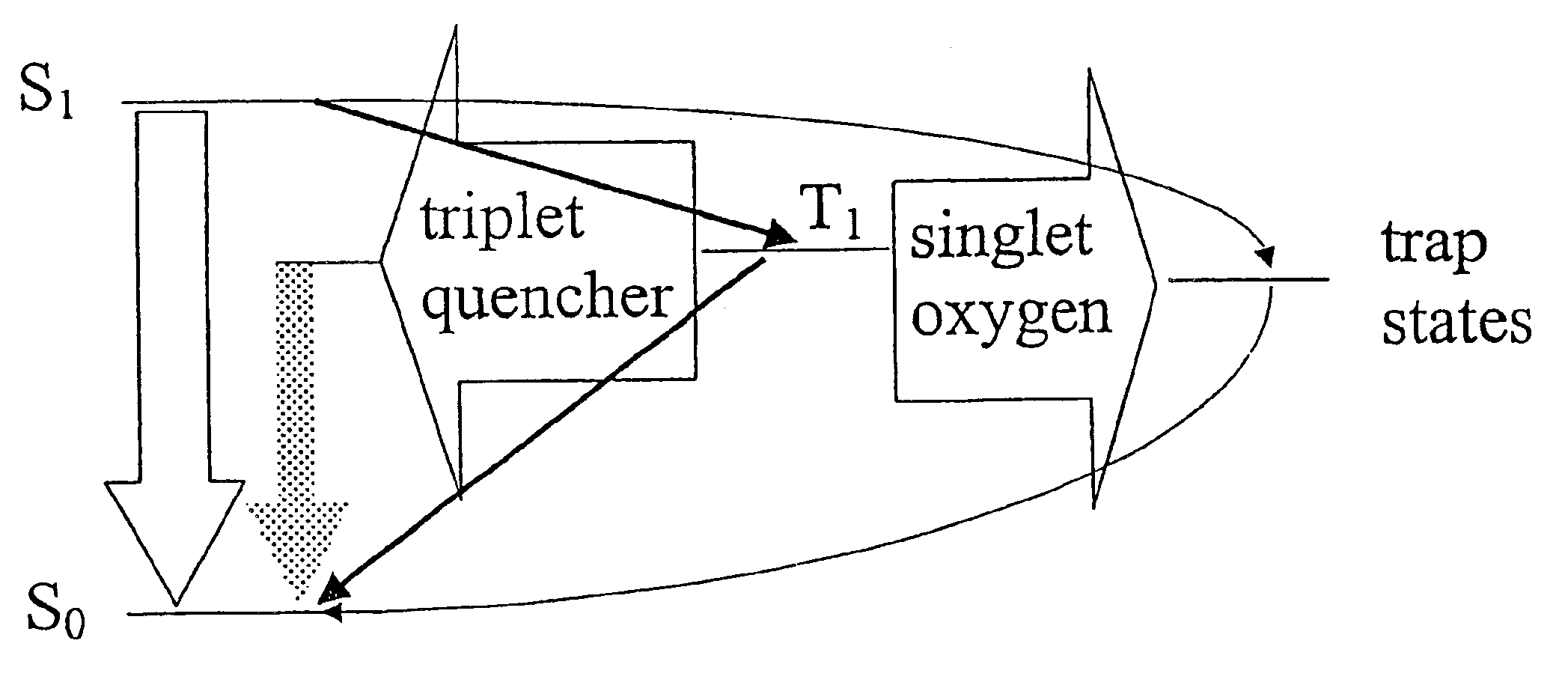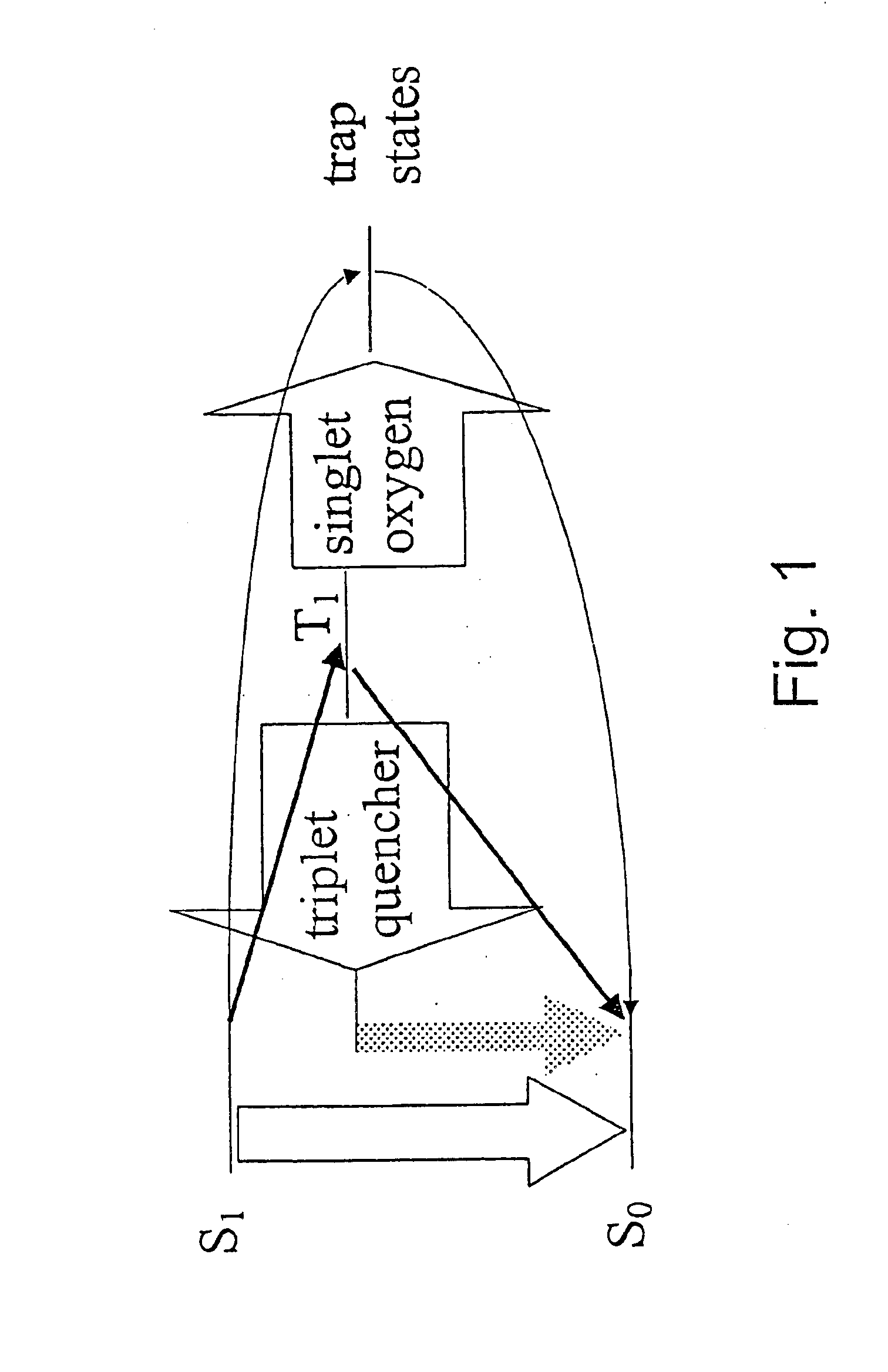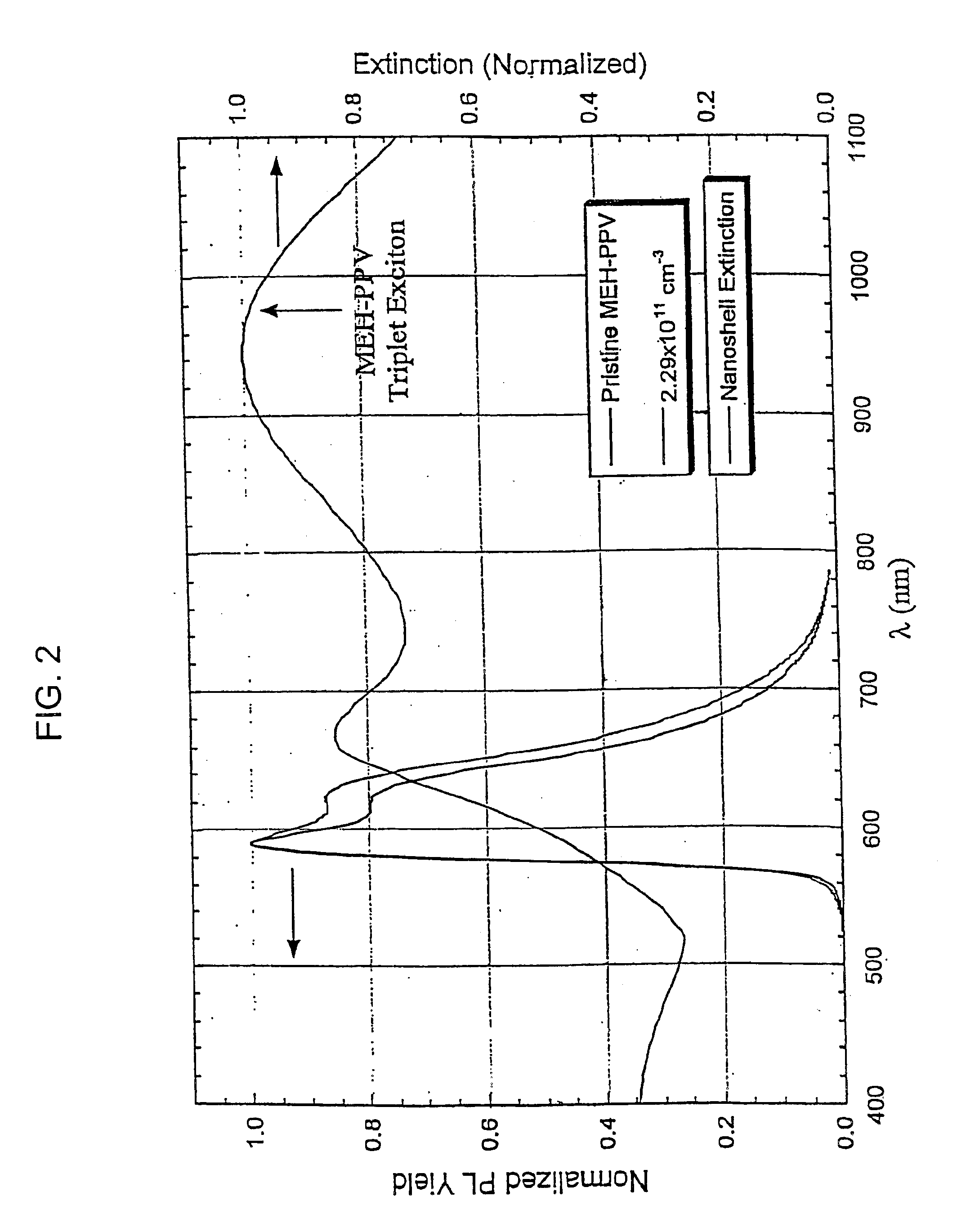Use of metalnanoshells to impede the photo-oxidation of conjugated polymer
a technology of conjugated polymer and metalnanoshell, which is applied in the direction of spectral modifiers, energy modified materials, conductive materials, etc., can solve the problems of limiting the range of encapsulation methods available, reducing the performance of devices, and limiting the life of devices, so as to impede the photo-oxidation process
- Summary
- Abstract
- Description
- Claims
- Application Information
AI Technical Summary
Benefits of technology
Problems solved by technology
Method used
Image
Examples
example
Gold nanoshells (silica core-gold shell nanoparticles) exhibit a strong optical resonance (plasmon resonance) whose frequency is sensitively dependent on the ratio of the nanoparticle's core and shell dimensions. Changing this ratio allows the nanoshell resonance to be placed at any wavelength of choice across a broad spectral region spanning the visible to the mid-infrared. In this set of experiments, gold nanoshells were designed such that their plasmon frequency was resonant with the triplet exciton-ground state energy transition in two different conducting polymers, poly[2-methoxy-5-(2′-ethylhexyloxy)-1,4-phenylenevinylene] (MEH-PPV) and poly(3-octylthiophene) (P3OT). The nanoshells were dispersed in polymer solutions (MEH-PPV / chlorobenzene and P3OT / chloroform), that were then spin-cast onto glass substrates to create nanoshell-containing films. Control films including the same polymers without nanoshells were also formed. No visible difference between the pristine polymer films...
PUM
| Property | Measurement | Unit |
|---|---|---|
| volume fraction | aaaaa | aaaaa |
| volume fraction | aaaaa | aaaaa |
| wavelength | aaaaa | aaaaa |
Abstract
Description
Claims
Application Information
 Login to View More
Login to View More - R&D
- Intellectual Property
- Life Sciences
- Materials
- Tech Scout
- Unparalleled Data Quality
- Higher Quality Content
- 60% Fewer Hallucinations
Browse by: Latest US Patents, China's latest patents, Technical Efficacy Thesaurus, Application Domain, Technology Topic, Popular Technical Reports.
© 2025 PatSnap. All rights reserved.Legal|Privacy policy|Modern Slavery Act Transparency Statement|Sitemap|About US| Contact US: help@patsnap.com



